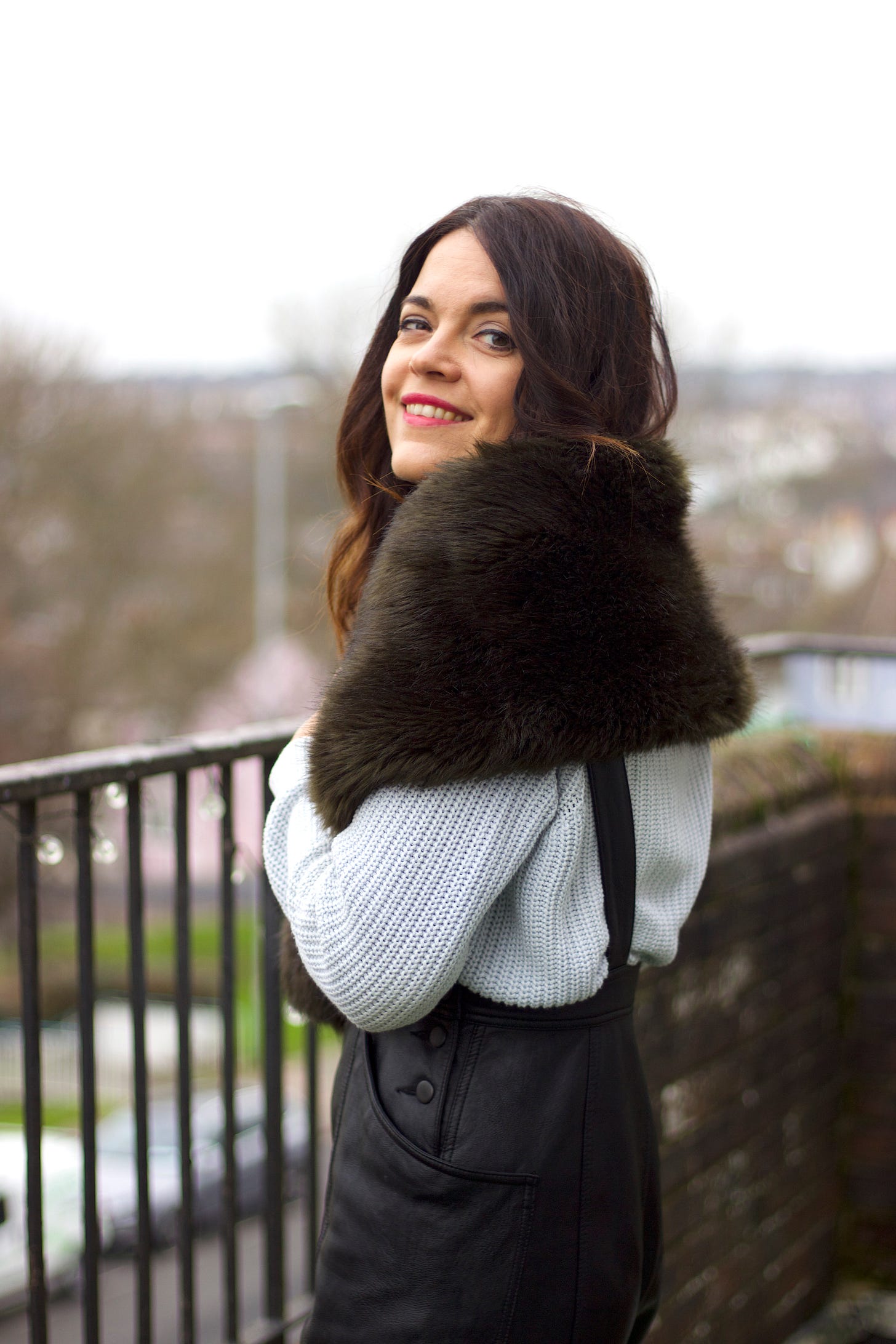Are You an Anti-Fur Activist in a Wool Knit? Ask Yourself Why.
There is indeed a difference. But it's not what you think.
A while ago, I was interviewed by a university student on the topic of campaigning against the use of animals in fashion. One of her questions was whether there was one material that I believe to be "more unethical" than others.
The question itself carried the implicit notion that is pervasive in the fashion industry: that there is an ethical way to use animals, and an unethical way to do so. That it's okay to exploit sentient individuals for our desires (not needs: desires), as long as we do it in a certain manner and not in another. That confining, depriving, tormenting, and killing animals can be excused by something - their skins supposedly being by-products of other (incredibly damaging and violent) industries, it having been done for hundreds of years, or there not being alternatives that are cheap enough (or expensive and exclusive enough), stylish enough, on-trend enough, and happen to be sold right under our noses. And most of all, that a cruel act is less heinous if it's something that "most of us" take part in.
Most people I have spoken to about these topics have been operating with the idea that materials like fur and exotic skins are somehow different from others, such as wool, down, and leather. And there is indeed a difference. But it’s not the one you’d expect.
The difference isn't in how the animals are treated - make no mistake, all these trades have blood on their hands. The cows whose spent, tired bodies become leather shoes are factory-farmed on crowded, filthy facilities, branded and tail-docked without any pain relief, and possibly stunned incorrectly at the slaughterhouse, meaning that their throats are cut while they are still conscious. The calf whose impossibly soft skin went into that clutch bag cried for his mother for days, confused and terrified. Curious, affectionate lambs die by the thousands every year as the wool industry leaves them vulnerable to the elements, disease, and starvation. And the survivors? PETA's 15 Videos That Will Change Your Mind About Wearing Wool, filmed at over 100 sheep-shearing facilities on four continents, show abuse so abhorrent that shearers have pled guilty to charges of cruelty to animals.
And please do not forget that all animals used for fashion end up at the same place - the slaughterhouse. Sheep whose bodies no longer produce wool, geese and ducks from the down industry, rabbits whose fur has been torn from their bodies for angora. A terrifying, premature death awaits all of them, whether they die for a biker jacket, a fur coat or a down parka. So if you believe that the horrors of animal abuse for fashion stop at fur, think again.
No, the difference is much more simple. More down-to-earth, even.
Think about it: how many fur coats have you ever owned?
And how many wool jumpers?
In our society, some animal-derived materials have become synonymous with a certain lifestyle - and not always in a positive way. Fur is the territory of the wealthy. The status-hungry. Vapid, tacky celebrities wear fur. Socialites, filthy-rich money-throwers, Joe Goldberg's despicable group of "friends" in season four of Netflix's You. Basically, people that most others love to hate. It becomes so simple to rage against them, those spoiled fur-wearers. How dare they abuse animals for a coat. Or a bag - exotic skins, which make up some of the most expensive fashion products on the planet, also fall into the purview of the 1%, and are hence another easy target of selective animal rights advocates.
Leather and wool, on the other hand, are everyone's game. You, your friends, your family and basically everyone you know owns these materials. Your sister, raving about that leather bag her boyfriend got her. Your grandma's comforting wool cardigan. Your mum trying to figure out how to FaceTime you to show off her new mohair-blend jumper. Your own cashmere knit, which magazines told you was an investment piece. It’s commonplace. It’s normal and accepted. It’s what “everyone” does. Learning that leather and wool are every bit as bad as fur would mean standing against your entire social circle, and possibly yourself.
The truth is, it's not hard to be "against" something you never used in the first place, and probably couldn't afford to. Most of us aren't wearing fur or buying lizard-skin purses anyway, so it costs us nothing to be outraged at them. Rather, we take pleasure in the opportunity to point our fingers at those awful rich people once again. It's the fashion equivalent of turning up our noses at expensive lobsters being boiled alive, to then proceed to throw another box of burgers, made from cows whose throats were slit while they were possibly still alive, into our shopping trolleys.
But giving up leather, on the other hand? Or wool? That's where the obstacle appears - because it means changing something in your own life. And this is where so many of us falter. This is where we start to think: “I'm already doing my bit because at least I'm not wearing fur.” Even if wearing fur was never a prospect, it's simple to latch on to that as an excuse to avoid having to actively do something. I know, because I was this way with being a pescatarian. "But at least I'm doing something!", I protested for years, before finally going vegan, and finding that it wasn't even half as hard as I expected it to be.
As I told that fashion student, change doesn't only come when fashion brands stop selling fur, or start offering more vegan leather. It comes when there is a collective shift towards the truth: that exploiting others' bodies for profit and vanity is inexcusable, and it is beneath us. Change is born when we see that animals are sentient, feeling individuals who suffer, feel joy, and love their families. Change happens when we realise that there is someone, not something, behind the label "genuine leather" or "ethical wool". When we stop looking for the least of two evils and instead choose the third option.
Wearing:
Faux wool knit, old fast fashion from 2013
Faux leather dungarees, Depop
Faux fur stole, Dogs Trust charity shop
All photos by David Camilli





